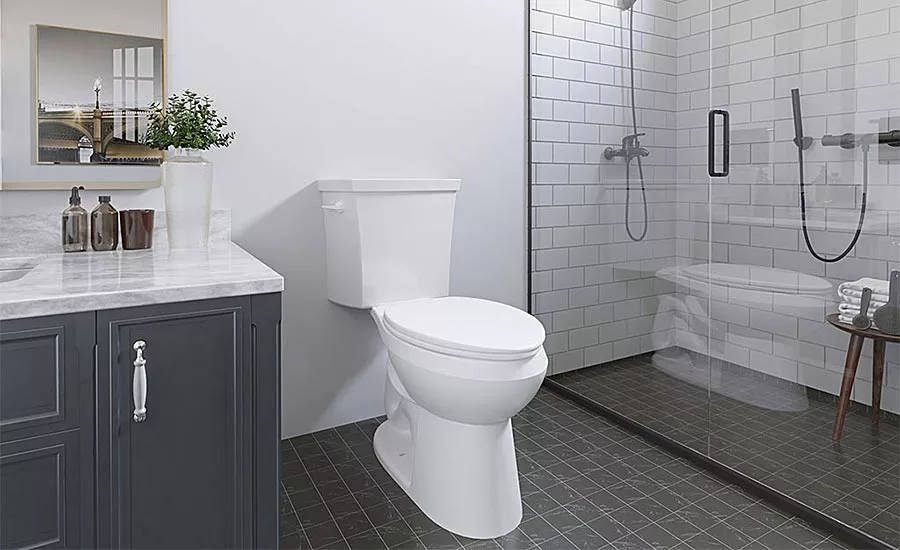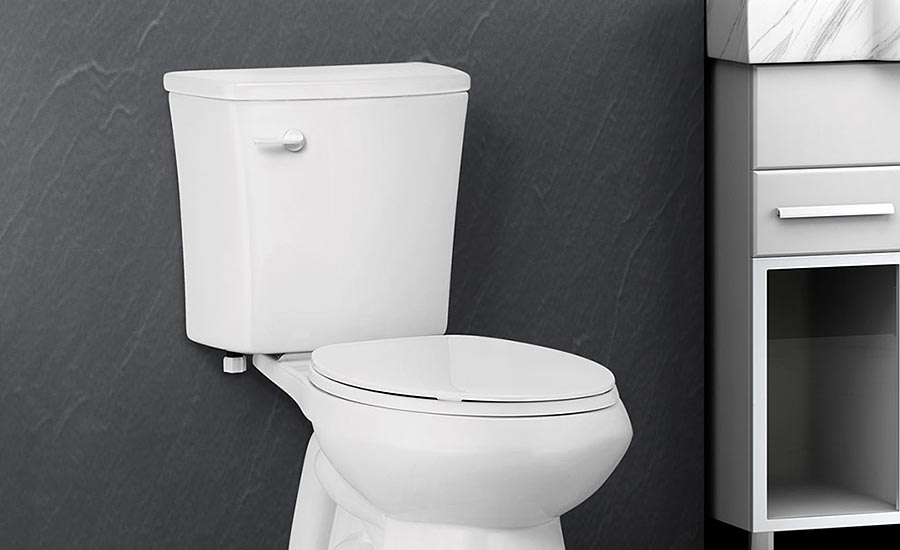WaterSense-certified toilets: Low-flow and high-performing
How plumbers can benefit by offering WaterSense-certified products.

Niagara’s WaterSense-certified Sabre line features flush volume options of 1.1 or 1.28 gpf and can clear 1,000 grams in a single flush.
With government regulations constantly decreasing the amount of water used in every flush, it’s no wonder that low-flow toilets are getting more and more popular, especially those with the WaterSense certification. But aside from helping to conserve water, what does the WaterSense certification from the EPA actually mean for plumbers?
Apart from following the requirements from the American Society of Mechanical Engineers (ASME) and having a flush volume of 1.28 gpf or less, WaterSense-certified toilets must also pass a flush performance test. The test, performed by a third party, requires that the bowl clears test media — typically miso paste — in a single flush. If the bowl is not completely clear from a single flush 80% of the time, the toilet fails the test. This means that to receive the WaterSense certification, the toilet must be low-flow and high-performing.
On top of saving water, which is always a bonus, WaterSense-certified toilets can also benefit you, the plumber, in the long run. Here are a few reasons why.
They cut down callbacks
As we mentioned above, WaterSense-certified toilets are certified by being low-flow, but also high-performing. High-performing toilets reduce calls about clogs, giving you more time to attend to better-paying calls and ensuring you’re not called back to fix a toilet you just installed.
In addition, if these toilets also have the MaP or MaP Premium certification, you can further seal the deal that these products will reduce your callbacks. These voluntary certifications ensure that the fixture is a high-efficiency toilet (HET) that can flush a minimum of 350 grams of waste. The MaP Premium certification takes it a step further by requiring that a single flush must clear the bowl of at least 600 grams of waste at a 1.1-gpf. That’s just over 1.3 pounds of waste in a single flush.
Flushing physics aside, ultimately, these certifications will increase homeowner satisfaction and give you more time for additional calls.
They’re millennial and Gen Z friendly
There is a major cultural shift in consumer behavior on the horizon, and just in time for new gpf regulations to come into effect.
With more and more millennials closing in on their 30s, they’re now also becoming homeowners — and Gen Z is right behind them. According to YPulse, 81% of these generations are either interested in purchasing environmentally-friendly products for their homes or already have.
With water scarcity and two generations full of clients who want to conserve resources, a WaterSense-certified toilet can cover your needs on both the societal and legal regulations.
 Niagara’s Shadow line is also WaterSense-certified and offered in options of 0.8 gpf and 1.28 gpf, making it ideal for apartments, condos, residential, hotels and health care, the company notes.
Niagara’s Shadow line is also WaterSense-certified and offered in options of 0.8 gpf and 1.28 gpf, making it ideal for apartments, condos, residential, hotels and health care, the company notes.
They’re perfect for any job
WaterSense-certified toilets are helpful and easy to install for existing structures, but they’re just as beneficial for new construction. For example, mechanical engineers and general contractors benefit from the WaterSense certification because it makes it easier to obtain LEED and other green building certifications that the Green Building Initiative set in place.
These certifications can grant builders tax credits and make buildings or homes more attractive to buyers due to lower insurance premiums.
We have provided three examples of how this certification can help you, but here’s one final reason you should use a WaterSense-certified toilet: Everything from the installation to the functionality is the same as a toilet without the WaterSense certification. There’s nothing new to learn or train your team on, you just have to look for the EPA’s WaterSense logo, and you’re set to go.
Don’t miss out on these benefits and more just because you’re used to a brand or toilet that is not WaterSense-certified. Be sure to look for the logo next time you’re stocking up!
Photos courtesy of Niagara.
Looking for a reprint of this article?
From high-res PDFs to custom plaques, order your copy today!








